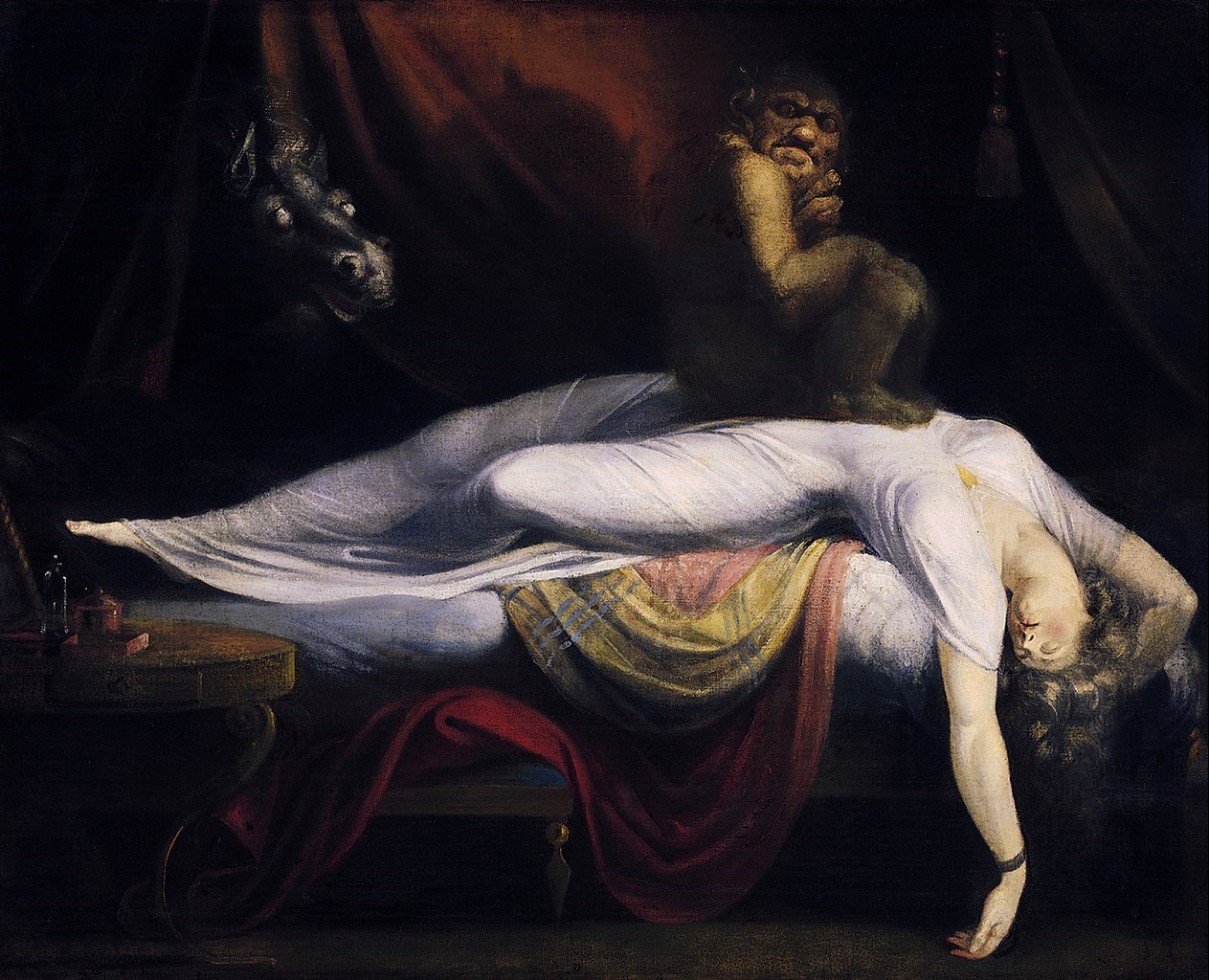Romanticism vs Realism
Keepin' It Real!
Art has always been a reflection of society, capturing the spirit of its era. Romanticism and Realism are two such movements that, though emerging in the 19th century, present contrasting perspectives. Romanticism, with its emphasis on emotion and individualism, often goes into the fantastical. In contrast, Realism focuses on depicting everyday life with straight up accuracy. This blog explores these two movements through selected artworks, ultimately with me favoring Realism for its grounded representation of life.
Romanticism
Romanticism was an artistic movement that emerged in the late 18th century as a reaction against the Industrial Revolution and the scientific rationalization of nature. It emphasized intense emotion, individualism, and the sublime beauty of nature.
"The Nightmare"
Henry Fuseli's "The Nightmare" was created in 1781 in England. In this painting, Fuseli captures a haunting scene with a woman in deep sleep, draped over her bed as a demonic figure crouches on her chest. This painting epitomizes the Romantic fascination with the supernatural and the unconscious. The chiaroscuro technique, with stark contrasts between light and dark, accentuates the eerie atmosphere. The distorted, almost surreal depiction of the incubus and the woman's lifeless posture evoke a visceral emotional response.
"The Raft of the Medusa"
Théodore Géricault's "The Raft of the Medusa" was painted between 1818 and 1819 in France. It is a monumental work that captures the aftermath of a contemporary shipwreck. The dramatic composition, with its chaotic yet structured arrangement of bodies, conveys a powerful narrative of human suffering and resilience. The use of dark, muted colors and intense, expressive faces draws the viewer into the tragedy, embodying the Romantic fascination with human emotion and nature's sublime terror.
Realism
Realism emerged as a response to Romanticism, aiming to portray everyday life without embellishment. It focused on the ordinary, the mundane, and the unidealized aspects of life, reflecting the social and political changes of the 19th century.
"The Stone Breakers"
Gustave Courbet's "The Stone Breakers" was created in 1849 in France. It depicts two laborers breaking stones on a rural road. This painting is a stark portrayal of the working class, devoid of any romanticization. The earthy color palette and the detailed, almost photographic realism highlight the physicality and hardship of manual labor. Courbet's focus on the commonplace, unidealized figures challenges the viewer to confront the harsh realities of life.
"Barge Haulers on the Volga"
Ilya Repin's "Barge Haulers on the Volga" was painted between 1870 and 1873 in Russia. It is a poignant depiction of men towing a barge along the Volga River. The painting's composition, with the diagonal pull of the haulers, emphasizes the grueling nature of their task. The muted tones and the realistic portrayal of the figures' strained postures and weary expressions evoke a deep empathy for their plight, underscoring the Realist commitment to social commentary.
While Romanticism's emotional intensity and dramatic flair are undeniably captivating, Realism's raw portrayal of everyday life resonates more deeply with me. The Realist artists' commitment to truth and their focus on the ordinary provide a more relatable and impactful perspective on human experience. These images resonate deeply in my soul with this military life that I'm living.
In Romantic works like "The Nightmare" and "The Raft of the Medusa," the use of dramatic lighting, dynamic compositions, and emotive subjects create a sense of awe and emotional intensity. However, the fantastical elements can sometimes feel distant and exaggerated. In contrast, Realist works such as "The Stone Breakers" and "Barge Haulers on the Volga" employ a more subdued color palette and straightforward compositions, grounding the viewer in the reality of the scenes depicted. The honest, unidealized portrayal of the subjects elicits a profound empathy and a deeper connection to the everyday struggles of ordinary people.
How They Reflect Off Each other
Romanticism sought to transcend the mundane and explore the sublime, often delving into the fantastical and the emotional. This movement was a reaction to the Enlightenment's focus on reason, emphasizing instead the power of imagination and the beauty of nature. However, Realism emerged as a counter-movement, grounded in the social and political upheavals of the 19th century. Realist artists aimed to depict the world as it was, focusing on the ordinary and the unidealized. They sought to highlight social issues and challenge the viewer to confront the realities of contemporary life.
To wrap this up, while Romanticism offers a dramatic and emotionally charged vision of the world, Realism's commitment to depicting the truth of everyday life provides a more meaningful and impactful perspective. The works of Courbet and Repin, with their focus on the ordinary and the unembellished, resonate deeply, offering a powerful commentary on the human condition.
Reference Links
"Realism Movement Overview." The Art Story,
"Romanticism Movement Overview." The Art Story,







Comments
Post a Comment